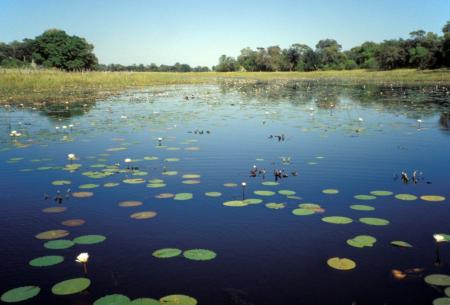Okavango Delta Ramsar Site is now 1000th World Heritage Site

On 22 June 2014 the Okavango Delta was inscribed as the 1000th UNESCO World Heritage Site, bringing the number of Ramsar Sites that also carry the World Heritage designation to 62.
The Okavango is a vast inland water flow that forms each year when the summer rains in the Angola highlands drain onto the plains of Botswana, flooding a wide flat area slightly larger than Belgium. The waters peak between June and August during the region’s parched winter, attracting one of Africa’s greatest concentrations of wildlife.
African elephants, buffalo, zebra, wildebeest, and giraffes can be found among the more than 200,000 large mammals that call the Okavango home during this season. The delta is also a refuge for more than 400 species of birds and 71 species of fish including the 1.4 metre African shark tooth cat fish. A variety of ethnic groups draw on the rich waters of the Okavango for fishing, hunting, and wild plant foods.
Stewardship of this unique ecosystem is structured by the 2008 Okavango Delta Management Plan (ODMP), a wide-ranging framework developed by Botswana’s Ministry of Environment, Wildlife and Tourism. The plan covers the institutional set-up for managing the site while ensuring biodiversity and sustainable livelihoods. Its development process borrowed heavily from the Ramsar Planning Guidelines, which encourage ownership through the active participation of all stakeholders.
"The Okavango Delta has been a Ramsar Site since 1996," notes Christopher Briggs, Secretary General of the Ramsar Convention, "and we're very pleased that our World Heritage colleagues have placed their 1000th designation on a site that so effectively illustrates how to integrate conservation and preservation with wise and sustainable use."